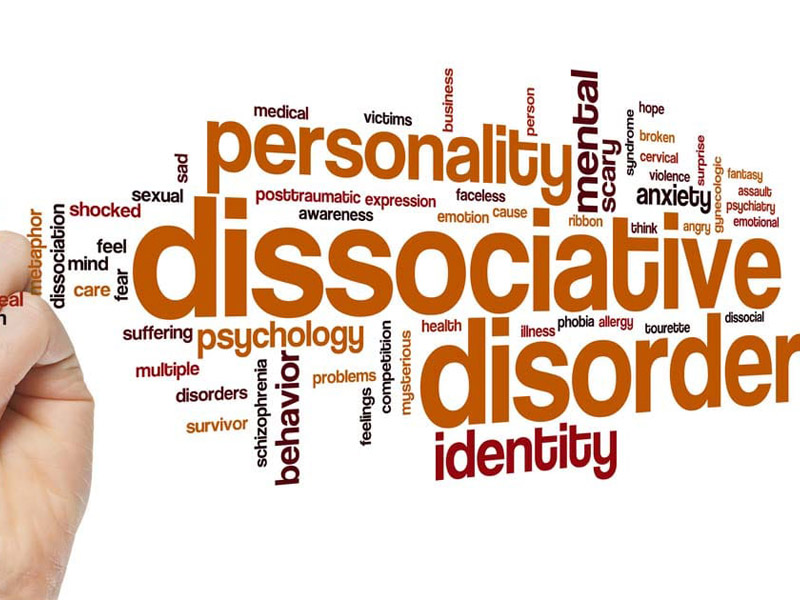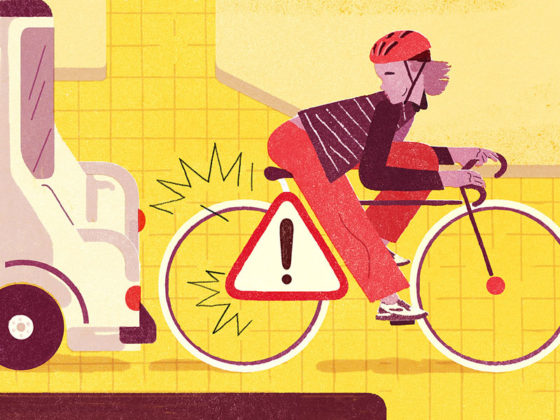During the past few years, there have been drastic improvements in medication and disease treatment, either on a genetic, neurosurgery or psychiatric level. These improvements have resulted in curing numerous illnesses and improving the lives of people in moral, social, economic and environmental ways.
It is said that every one out of four people in our world suffer from some kind of mental problem today. Professionals are trying desperately to cure these disorders using psychological or medical treatment. Although, since all diseases are different, it can sometimes be difficult to predict how, when or to what extent is the person going to recover. Some treatment takes years and years of therapy and hand work. One of these kinds of disorders is Dissociative Identity Disorder (DID), previously known as Multiple Personality Disorder. (MPD)
DID is one of the rarest, most complicated diseases. Statistics show that only as little as 1% of the world’s whole population is diagnosed with DID. It is described as a “condition in which two or more distinct identities or personality states, also known as alters are present in-and alternately take control of an individual.” It is a coping mechanism for extreme, continuous traumatic events that happened at the ages of 6-9. Dissociation or detachment from reality can be a way of protecting the person from painful experiences. In this way, different personalities experience the trauma, leaving the host with no memory of the event.
To be diagnosed with DID, the person must meet all of the symptoms and criteria common for this decease. The symptoms include a sense of “losing time” while the other alter has control of the body, confusion, feelings of dissociation, memory gaps and amnesia between the switches to different alters and out of character behavior, which is caused by distinctive personalities of alters. It is also important to take into account that all people with DID also experience flashbacks and persistent nightmares and therefore are sure to have post-traumatic stress disorder.
The first person to discover DID was a French physician Jean-Martin Charrot, in 18080s. At first, there wasn’t much known about this disease, so it was thought to combine traits of hysteria and epilepsy and so they called it Hystereo-Ehilepsy. Later on, the assumption was proved wrong and the name was changed into Multiple Personality Disorder, up until 1994. By this time, the condition was described as proliferation of new, separate personalities, although this idea was was also proved wrong by further investigations and better understanding of the disease in the later years. It’s name finally changed to Dissociative Identity Disorder, as it’s characterized by fragmentation of a personality, rather than a growth of a new one.
One of the essential parts of treating DID is through long-term psychotherapy, with a goal of integrating different personalities into one. However, DID can also be treated in numerous other ways, including psychiatry, some medication, desensitization and reprocessing method, clinical hypnosis, creative therapies, dialectic-behavior therapy, eye movement and cognitive-behavior therapy.
During the psychotherapy sessions, the therapist’s main goal is to to “relieve the symptoms, ensure the safety of an individual and those around him or her and “reconnect” the different personalities into one integrated, well-functioning identity.” It is important the the person learns to safely express and process the traumatic memories, develop new coping skills and improve relationships.
If during the treatment, some cognitive-behavioral therapy is included, then the focus will also be in changing dysfunctional thinking patterns and behaviors.
Another technique that’s called eye movement desensitization reprocessing (EMDR), is meant to treat people who experience flashbacks, nightmares and other symptoms of post-traumatic stress disorder.
Creative therapies, for example art therapy or music therapy allow people to express their thoughts, feelings and experiences in a safe and creative environment.
Meditation and relaxation techniques focus on helping people to better tolerate, understand and communicate with their alters. They include digraphic breathing, 2-minute relaxation, body scanning and much more.
Clinical hypnosis-another way of treating DID can be similar to meditation and relaxation techniques. This method uses intense relaxation and concentration to “achieve an altered state of consciousness” and allows people to explore their hidden thoughts, feelings and memories that might have been lost from their conscious minds.
Last but not least, medication too, can help on the way of treating DID. Although there is no specific medication to cure the dissociative disorders directly, people still highly benefit from taking some antidepressants or anti-anxiety medications.
All this effort put into the treatment of different mental diseases clearly have a very outstanding result. Different kinds of treatment may effect different parts of person’s lifestyle. Proper treatment can improve person’s moral values and social life. For example, researches have shown that most people who receive psychotherapy show a huge benefit from it. In most cases, they experience symptom relief. With less mental problems to worry about, people focus on their goals and become much more productive. Without any more worries and weights on their shoulders from all the pain caused by the illnesses, they become more high spirited, positive and start working on a more sustainable and healthy lifestyle with improved states of mind. This improves their moral values and a way of living. People also start to have better and healthier relationships with people around them, which effects their social life.
As a proof of this, we can discuss a small experiment, conducted in Henry Phipps Psychiatric Clinic, where twelve patients were given four tests before and after psychotherapy. Two of these tests were given to the patients’ therapists. “People who improved tended to revise certain of their moral values in the direction of their therapists’, while the moral values of patients who were unimproved tended to become less like their therapists’.”
But of course, like everything else, treatment comes with it’s own disadvantages. As mentioned before, while treating DID antidepressants can be used in benefit of the patient, but antidepressants, along with other medications can have side effects. They are mainly aimed to correct chemical imbalances of neurotransmitters in the brain and increase their numbers, but because antidepressants don’t only effect one of our brain parts, in some cases they might cause jitteriness, dry mouth and blurry eyes, which typically go away after a week or two. But other symptoms caused by them may last much longer. Such is: nausea, increased appetite and wight gain, loss of sexual desire, fatigue and drowsiness, agitation, irritability and so on. This can be explained by the fact that antidepressants work on every parts of our brain, like frontal lobes, temporal lobes, hippocampus, amygdala, brain stem and so on.
Along with incorrect use of antidepressants, psychotherapy may have negative effects as well. Firstly, therapy is very expensive, so getting a proper treatment may not be affordable to everyone and put huge debts on person, which will highly effect their financial status and economic well-being. But many other things can go wrong during psychotherapy sessions. The person might not be a professional and instead of curing the patient, unproved treatment and false diagnosis will result in far worse results. This might cause the person’s condition to worsen and destroy their social and moral status. In this case, therapist might face malpractice because of legal responsibility towards the patient.
Many therapists today don’t really understand what the patient needs and therefore, their interventions are ineffective. This is caused by unprofessionalism and limited range of knowledge in some specific diseases. An evidence of this can be a website on internet called “very bad therapy” which uses podcasts to give voices to the stories of people’s terrible experiences with their therapists. Just the fact that there are so many people active on this website is a proof alone that many therapists can’t be trusted.
Treatment surely comes with a lots of advantages, along with disadvantages. Although, since the number of mentally ill people nowadays is still relatively high, avoiding any kind of treatment because of their disadvantages will be unreasonable. Antidepressants may have their side effects and some therapists might not know how to properly do their job, but most of the people who have gone through psychotherapy have changed their therapists numerous times, until they found the one they were comfortable with. So it’s only a matter of finding the right psychotherapist and some financial support for sessions and medications. Therefore, mental health treatment should be available to everyone and must be achieved by those who need it, because untreated people are most likely to contribute to higher medical expenses, poorer performance at school and work, fewer employment opportunities and increased risk of suicide.
In the end, we can state with confidence that treatment is an important part of healthy life for mentally ill people and studying these diseases is even more important. Without a proper understanding of the illness, people can not find the cure and treat them. Just like dissociative identity disorder, which was previously misunderstood and mistaken for a completely different mental condition. The very first patients with this disorder used to be treated in ways unimaginable for modern society. The “treatment” included electric shock therapy, which meant electric currents were passed through the person’s brain, which would cause a seizure. This was thought to adjust self-view of the patients, which would cause the symptoms to go away, but of course, since they had no understanding of the disease itself, their treatment methods were not effective and therefore worsened the conditions of the patients. This is exactly why, in today’s society, it is very important to have educated people working as psychotherapists, psychiatrists and other professionals who are dedicated to improving the lives of ill people.





